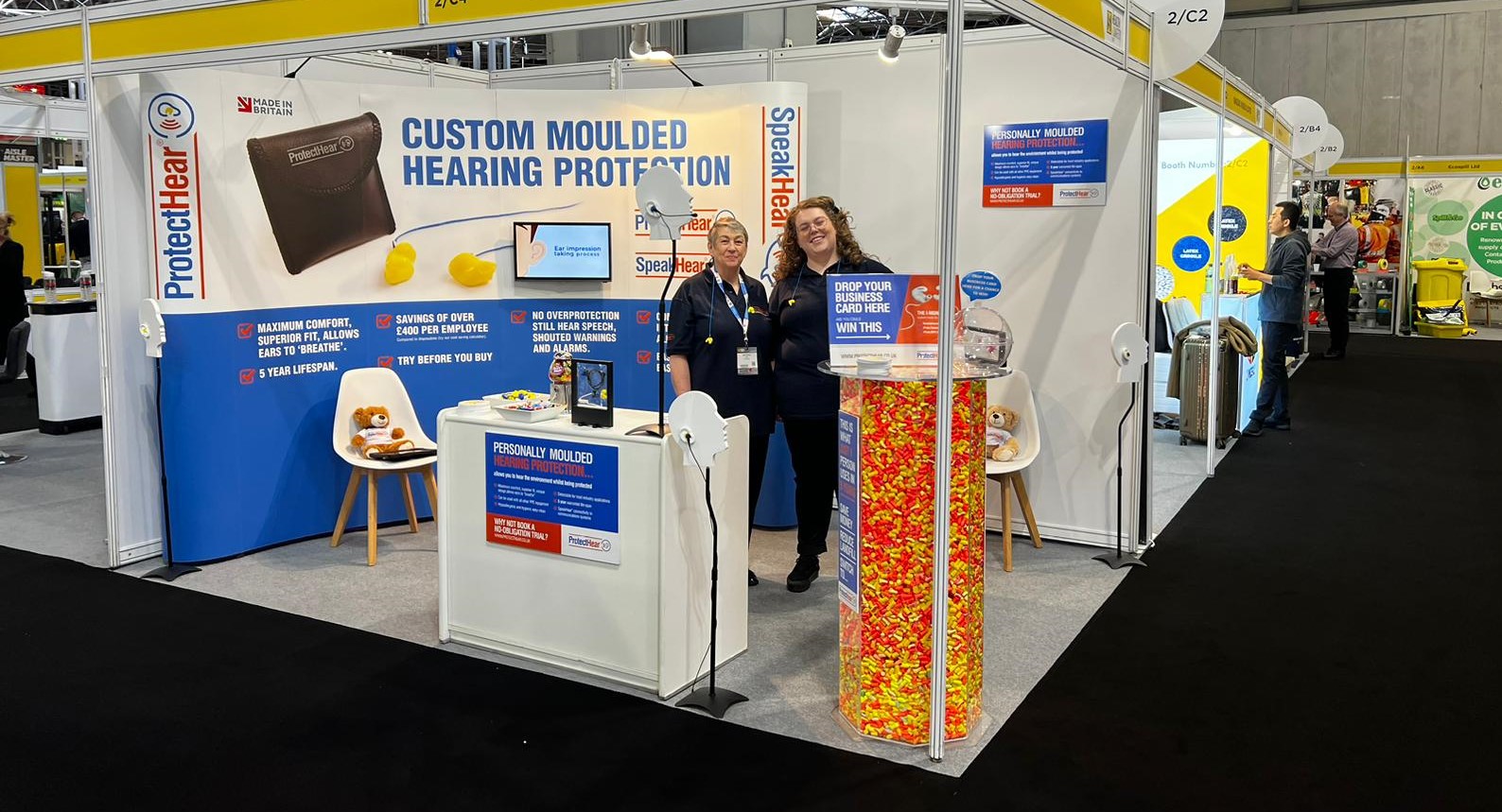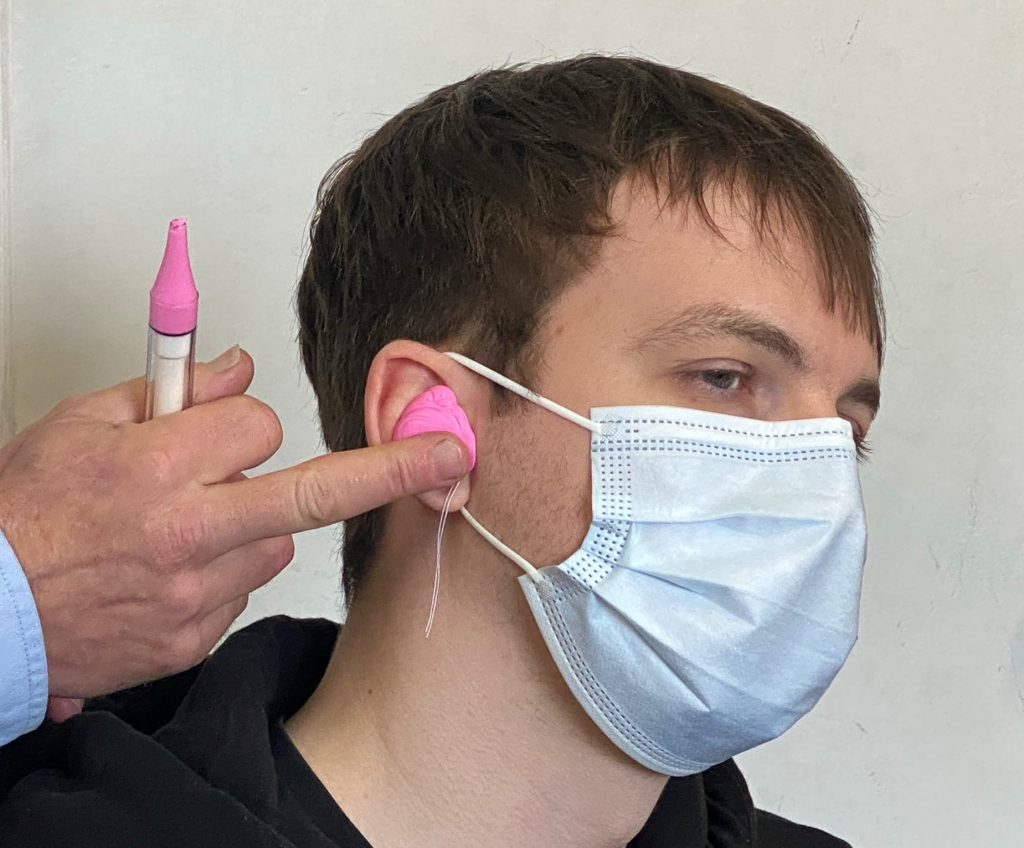Employer-led
hearing conservation achieves the best results
When it comes to industrial hearing protection, the well-known proverb: “You can lead a horse to water, but you can’t make it drink” springs to mind.
In short you can provide your workforce with the best hearing protection money can buy, but you can’t simply expect your employees to use it unless, as their employer, you lead the way.
Some workers will
continually put their own hearing at risk by either incorrectly using the
hearing protection equipment you have provided, or not wearing it at all, and
here’s why:
1. Lack of employee engagement
Your
workers may not fully understand the long term effects working in a noisy
environment could potentially have on their hearing.
OK – so it’s common sense to accept if it’s noisy at work you wear ear plugs or ear muffs. But do your workers really understand the implications and what is expected of them in terms of their commitment to using and wearing the hearing protection you have provided?
Of course, to operate within the law industrial employers must carry out noise assessments. Most international regulations for noise exposure at work state that the loudest noise a person should be exposed to for an 8-hour working day is 85dB.
It’s a good idea to let your workers know that you regularly assess their workplace noise levels, and to show them how their working environment measures up in terms of the 85dB / 8 hours regulation. Make sure they know exactly what they are dealing with, what the risks to their hearing are and why you have taken the trouble to invest in excellent hearing protection equipment for them.
2. You need to review your choice of
hearing protection
There
are two main categories for industrial hearing protection – ear plugs or ear
muffs/defenders – and depending on your working environment as an employer you
need to weigh up all the pros and cons in relation to your unique working
environment.
Of course both categories offer several variations.
With ear plugs your three main options are:
⁻ Custom-moulded, re-usable ear plugs that are uniquely pre-formed to fit your workers’ ear canal precisely
⁻ Mouldable foam
disposable ear plugs
⁻ Head banded foam
ear plugs which are semi-inserted into canals
With ear muffs / defenders:
⁻ There is a wide
range of ear muff / defender brands available
⁻ They are made of a
sound-attenuating material and have soft ear cushions with a hard outer cup
held together by a headband
It’s up to you as the employer to assess
your workplace and consider the best options for your unique environment and
for your workers. For example ear muffs are often uncomfortable in hot and
humid work areas and they can interfere with the wearing of safety glasses. For
workers who need to wear prescription glasses muffs may also break the seal
between the ear muff and the skin resulting in decreased hearing protection,
whereas ear plugs are small and portable. Custom moulded ear plugs are
re-usable making them more cost effective and kinder to the environment.
It’s often beneficial to involve your workers when making this choice.
3. Lack of adequate training
Once engaged and you have chosen appropriate hearing protection for your workforce it is imperative you provide adequate training. Your workers need to know how to use / wear their hearing protection and how to clean and take care of their ear plugs or muffs.
A tool-box talk needn’t take long but can be very effective.
4. You’re allowing your employees to pay lip-service
It’s no good allowing your workers to pay lip-service to their hearing protection. Many workers wear ill-fitting disposable ear plugs balanced in the ear canal entrance. If they are doing this they need to know they may as well not be wearing any hearing protection at all.
Sometimes workers are tempted to replace their hearing protection with music earphones thinking they are still protected. This is not the case. Music earphones are no substitute for hearing protection and should not be worn to protect against exposure to industrial workplace noise.
Intermittent wearing is another key issue. To get the full benefit of their hearing protection your workers should wear their ear plugs or defenders 100% of the time whilst exposed to industrial noise. Removing their ear plugs or muffs even for a short time, substantially reduces protection.
Time
hearing protection moved in 1 hour, with effect on hearing protection used:
|
Time Removed in 1 hour
|
Maximum 25 dB Protection is reduced to (dB)
|
|
1
minute
|
17
|
|
5
minutes
|
11
|
|
10
minutes
|
8
|
|
30
minutes
|
3
|
|
60
minutes
|
0
|
Source: Health
& Safety Executive (HSE)
When it comes to hearing protection allowing box ticking is not good enough –
it won’t conserve your workers’ hearing.
5. There is a lack of understanding
around comfort
On
average it can take a couple of weeks for a worker to get used to their hearing
protection, but they need to know it’s well worth persevering for long term
protection. Of course having a custom-moulded ear plug inside your ear
canal when you’ve never worn one before is going to feel a little different,
but a two-week settling in period is nothing when it comes to conserving your
hearing. As an employer it is important to make it very clear to your workers
that this is the type of hearing protection you have chosen for them, because
you care about protecting and conserving their hearing for the long-term and
that you expect them to persevere through the comfort barrier and wear them
consistently.
6. There is a fear of over-protection
Of course your workers need to be able to protect their ears from industrial
noise whilst at the same time being able to communicate effectively with their
co-workers and to hear warnings and alarms. Getting the level of protection
right is a key consideration for any industrial employer. There is a wide range
of comms equipment available with hearing protection equipment to ensure your
workers are not over or under-protected.
7. There is a fear of infection
Some people are fearful of putting things in or near their ears for fear of infection. You need to take steps as an employer to help your workers avoid infection. The following should be covered in training and tool-box talks.
Cleaning re-usable custom moulded ear plugs is easy as they are made of medical grade silicon which prevents dirt sticking to them. Wearers should squeeze out and wipe off any ear wax, then simply wash their ear plugs with hand soap after washing hands, and dry with a paper towel.
Workers need to know that handling disposable ear plugs and putting them in and taking them out during the course of the working day with dirty fingers should be avoided.
Washable ear muffs should be disassembled regularly for cleaning with a mild liquid detergent in warm water and then they need to be rinsed in clear warm water ensuring the sound-attenuating material inside the ear cushions does not get wet. A soft brush should be used to remove skin, oil and dirt that can harden the ear cushions if left. Excess moisture should be squeezed from the muffs before they are placed on a clean surface to air dry.
8. There is a lack of inspection &
record keeping
Employers
needs to carry out regular inspections to ensure their workers are adhering to
their end of the bargain when it comes to using their hearing protection
equipment. It is recommended the employer keeps track of which workers have
been issued with what, in terms of hearing protection and how each employee is
maintaining / cleaning their ear plugs / muffs. It is good to have a record
showing the results of inspections, to show how seriously individual employees
are taking their hearing conservation.
9. You have no effective Hearing
Conservation Programme in place
If you’re going to invest in quality
hearing protection for your workers you need to make sure it is taken seriously
by everyone.
The best hearing protection results tend to be achieved when the employer takes
the lead by putting a ‘Hearing Conservation Programme’ in place that involves:
· Carrying out
adequate noise assessment of the entire working environment
· Choosing the most
appropriate hearing protection for the workplace and its workers
· Delivering clear
and effective employee training and education
· Paying attention to
hygiene and maintenance.
· Carrying out
regular inspection and record keeping
· Communicating with
employees about their hearing protection and involving them
Contact us, we are happy to
help…
ProtectHear are the UK’s
leading custom moulded ear plug specialists and their technicians are on hand
Monday to Friday, during normal office hours, to help if you would like any
further information about the ear plugs themselves, the comms accessories, the
ProtectHear moulding process or the ‘try-before-you-buy’ trial that is
currently available to new customers.
Please call ProtectHear on 01507 604322, email them at enquiries@protecthear.co.uk, or submit an online enquiry form.




 Try before you buy
Try before you buy How do I book a trial?
How do I book a trial?


